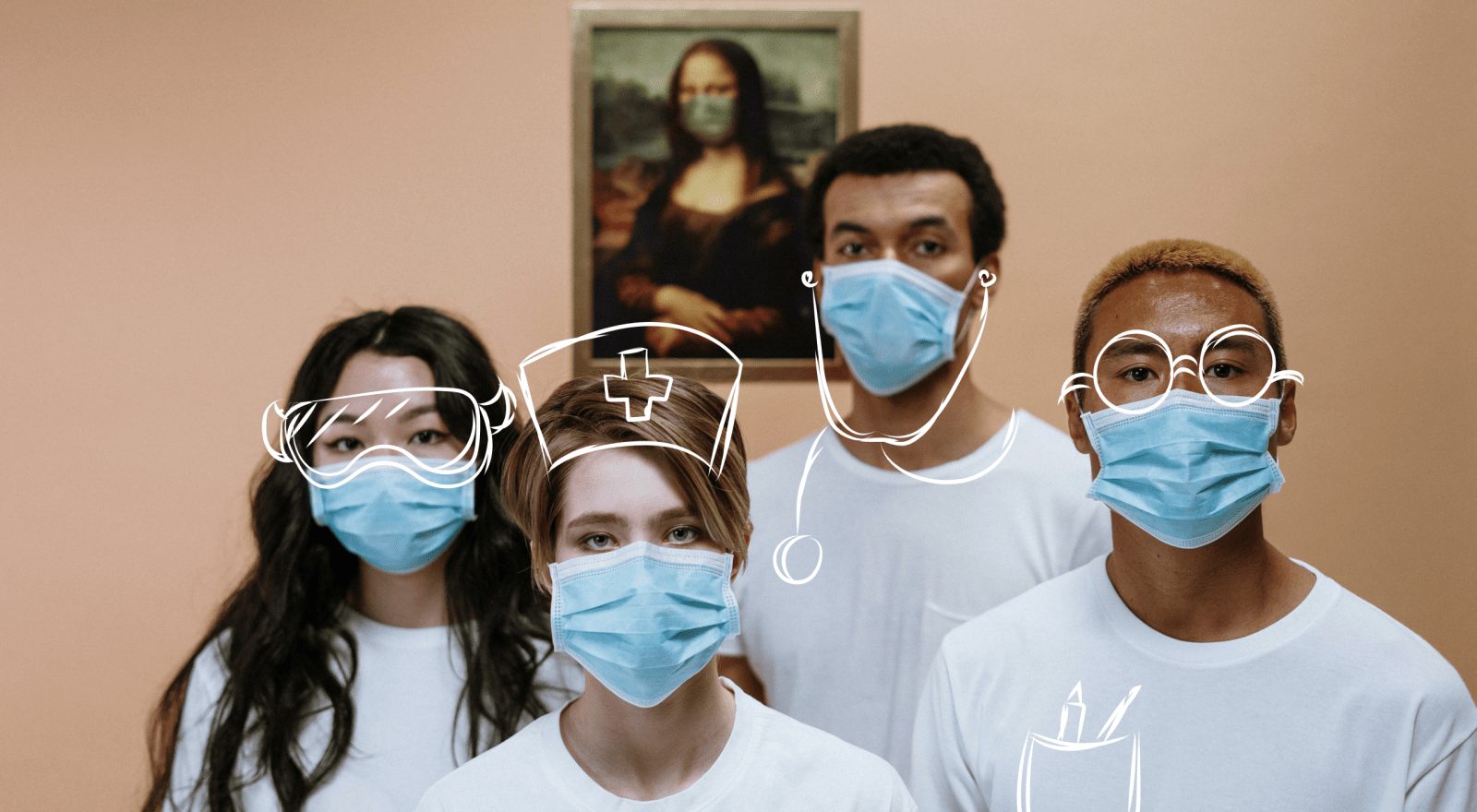There is no secret that the mobile app industry is now booming, putting other sectors aside. According to Statista, there are over 2 million apps on App Store as of the first quarter of 2021 compared to just 500 apps in 2008. Each year it’s becoming harder and harder to compete in the mobile industry. So, how to stand out from the ever-expanding number of similar apps? Product and UI/UX design plays a huge role here.
We highlighted the key UX principals that help to combat the competition in one of the most complicated and diverse industries — Health & Fitness. Design here is not about simple assembling and editing, it is all about value, help, simplifying and making the world a better place. More than that, design in H&F is about empathy and the connection between humans and apps. Before, most healthcare apps were poorly designed, resulting in a bad user experience and possibly making life seem even more complicated. It’s great to see the major change in the industry now, with people attaching more importance to design. As a result, more and more H&F apps started to look aesthetic and change people’s lives for the better.
The aesthetics of your product speaks out for you just as much as the functionality, because if the functionality is no longer unique, guess what steps in? The beauty.
So, here are 3 main UX principals— Engagement, Trust and Emotions. We have identified them based on the analysis of the health and wellness market, as well as the applications of our partners in this industry. Today I’d like to dwell on the ways of implementing these principals. They could be used not only in the H&F sector but also in mobile applications in general.
Engagement
Getting people to download your mobile app is one thing, keeping those people engaged is another thing, engaging users in the long run — is almost impossible. But there is a trend that spans across industries and motivates users to take meaningful actions, again and again.
There is a coffee shop in Minsk where you can participate in a small lottery called “Dessert in a bag”. The rules are simple: you pay a symbolic fee and pull out a piece of paper with a random dessert. It’s an excellent way to make customers buy desserts even if they don’t want to eat. The success recipe is simple: people are willing to spend money as long as it’s fun and engaging — this is the psychology of lotteries. You probably guessed what trend I’m talking about. Gamification is everywhere, not only in the digital world.
If we take a closer look at the statistics of the most popular categories on the App Store, we’ll see that Games are far ahead of others. So why don’t other apps implement gamification features?
Of course, they’ve already done it. Previously, gamification was most commonly used in e-learning apps (e.g. Duolingo).
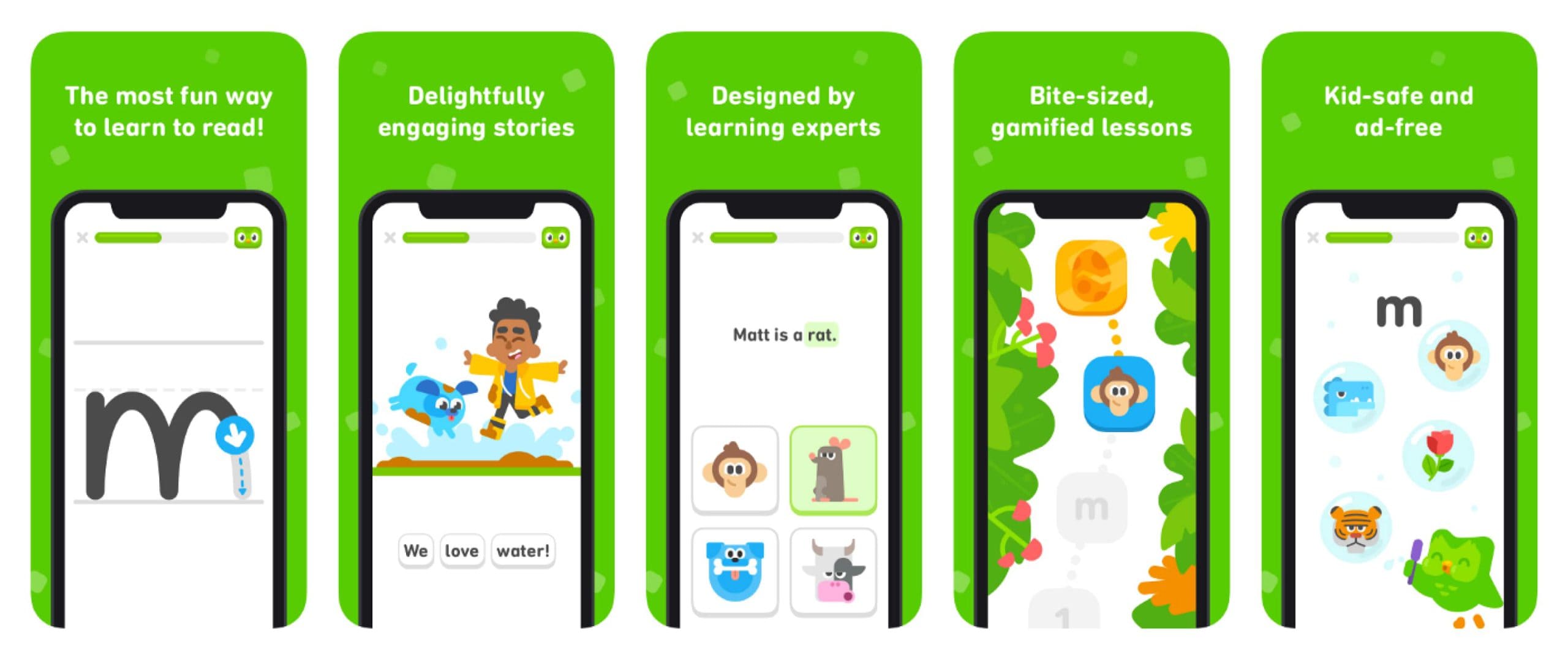
Now gamification is welcomed not only in e-learning, but also in fintech, productivity apps and health & fitness.
Why is gamification becoming so popular in healthcare? Because it motivates users to learn new skills and develop healthy behaviors in an effortless and engaging way.
Gamification is a design that places most emphasis on human motivation in the process. In essence, it’s a human-focused design. Yu Kai Chou
What gamification elements do H&F apps use?
1.Points, badges and other types of rewards.
Users can receive these rewards for their actions in the app. They can further exchange them for something else (additional features, “lives”, new content, your character upgrades and other benefits). Some apps even use real-life awards like store discount coupons (e.g. Mango Health).
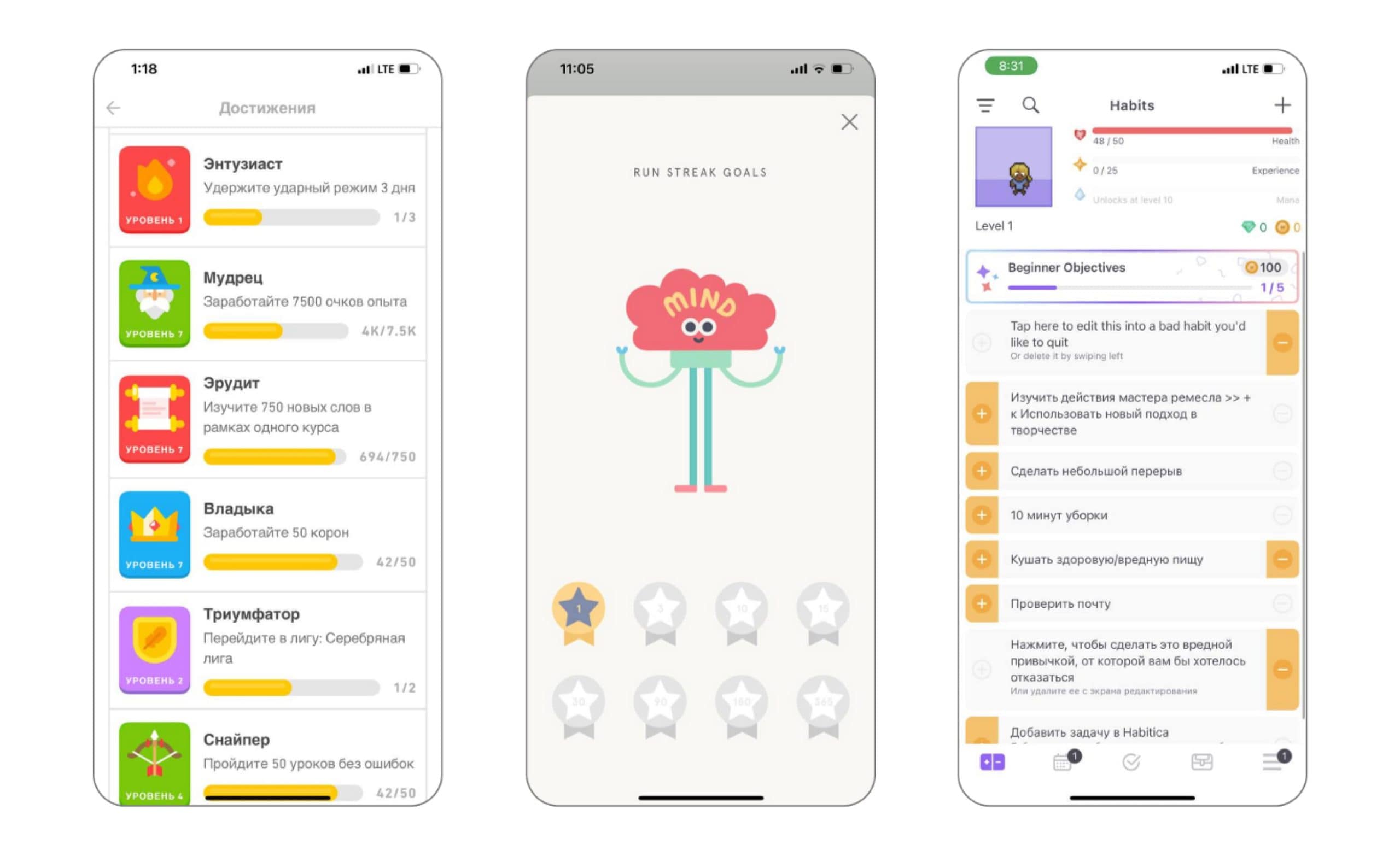
2. Challenges with friends and leaderboard.
Everything is easier when you’re doing it with someone else. You can support each other when going through the tasks. Moreover, competing with someone gives you additional motivation to take on the challenge and win.
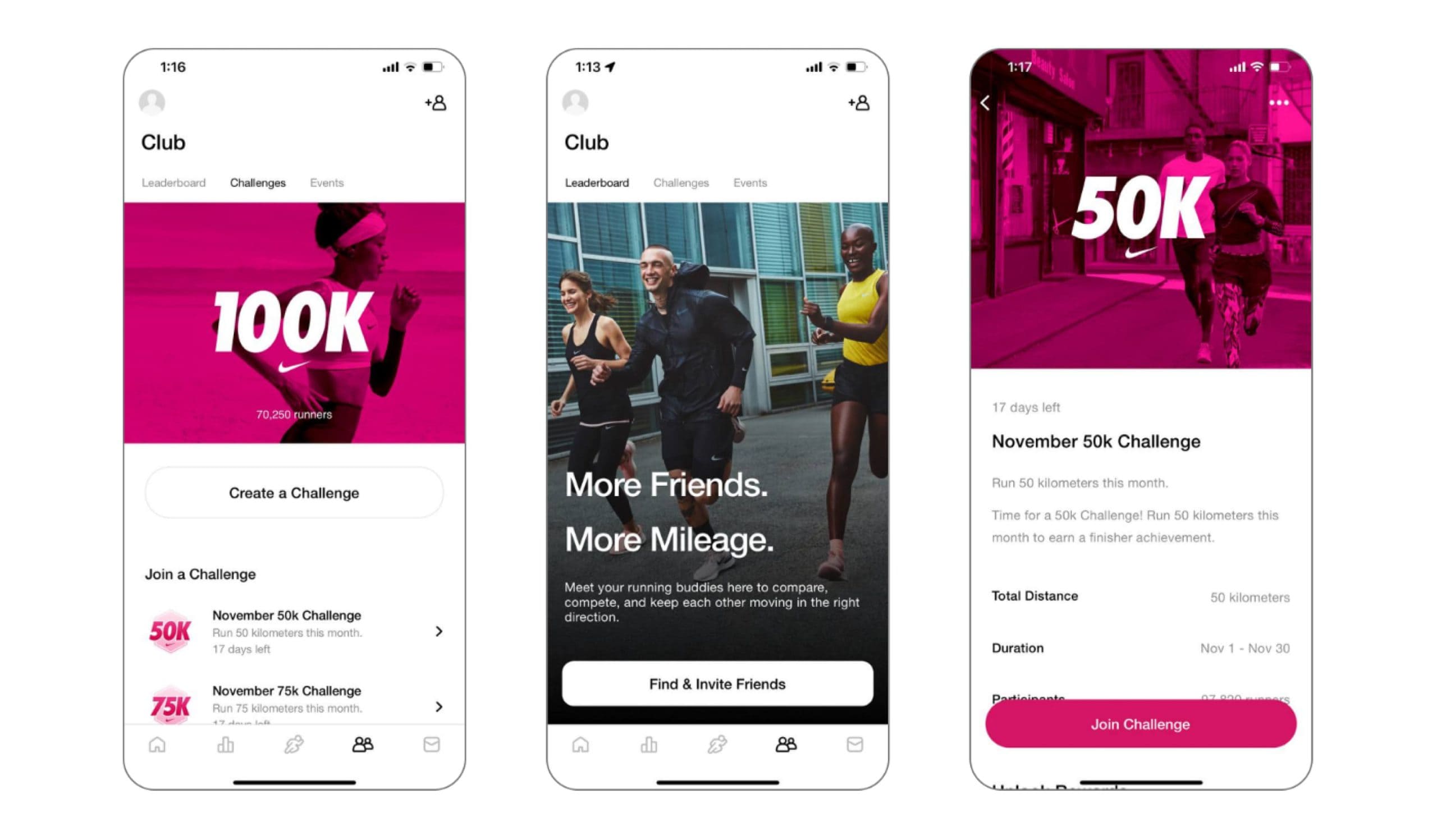
Source: Nike Training Club
3.Performance charts.
These graphs show your progress compared to the previous results. It is important for people to see the progress of how he goes to his aim and some intermediate results.
4.Content presented in a gamified way.
Apps present the content in the quiz format, dividing it into small chunks to make them easier to complete. All the content is structured by levels: from the easiest one to the most complicated.
It’s not necessary to implement all the elements. Mental wellness apps use challenges, quizzes, rewards to make users’ way to obtaining emotional wellbeing more interactive and engaging. Fitness apps use badges, like those for steps you walk, and social engagement to make users challenge their friends and motivate them to reach their fitness goals in a fun way. And it works because the human brain is constantly seeking new challenges.
Trust
Trust is a fundamental element in the healthcare industry. If patients do not trust their clinicians, they will not be willing to follow their diagnoses and recommended treatments. The same thing with apps in the H&F industry. Brands compete to gain trust among the users and offer the one-off solution to cater to their needs.
Here’re the ways that help H&F apps build trust among their users:
- Content personalisation
- Social proofs
- Content personalisation
- Social proofs
1. Content personalisation
I think you already know what personalisation means. The simplest example is your name included in targeted email newsletters sent by brands. Another example is your name highlighted on the home screen — something like “Good morning, Nella” — greeting you every time you launch the app once you have indicated your personal details when signing up. These are very simple examples of personalisation, but even with them, brands can increase their conversion rate and trust dramatically.
One of the best examples of how effective personalisation might be is 8fit, a popular health and fitness app that has raised $7 million in Series A funding thanks to the tailored workouts and meal plans they offer. What kind of personalisation they use?
Personalised workout plans.
The first thing the 8fit app does to make your program personalised is asking you a bunch of questions regarding your goals, gender, age, height, weight, current body fat, targeted body fat and more. And after you’re all set — it suggests the best workout program based on your answers.
Personalised nutrition plans.
Apart from casual questions like what’s your diet, they also suggest selecting ingredients you want to leave out, choosing the recipe’s complexity and meals variety.
2. Social proofs
The concept of social proof is closely related to the concept of trust, which, as we have already found out, is a key term in the healthcare industry. Something new always causes distrust. Before buying something new, we all often read reviews and look for confirmation that people liked it. To gain user trust, apps are trying to embed social proofs showing how helpful the app was to others or how certified were the nutritionists who tailored the meal plan.
The dominant social force that drives our thinking and our actions is the unconscious search and need for social proof.
There are 2 types of proofs that can be used in H&F apps:
1.Positive stories of users who’re using this app.
Companies usually make blocks with positive stories from users on the onboarding or paywall sections, showing how the app solved the exact problem for other users.
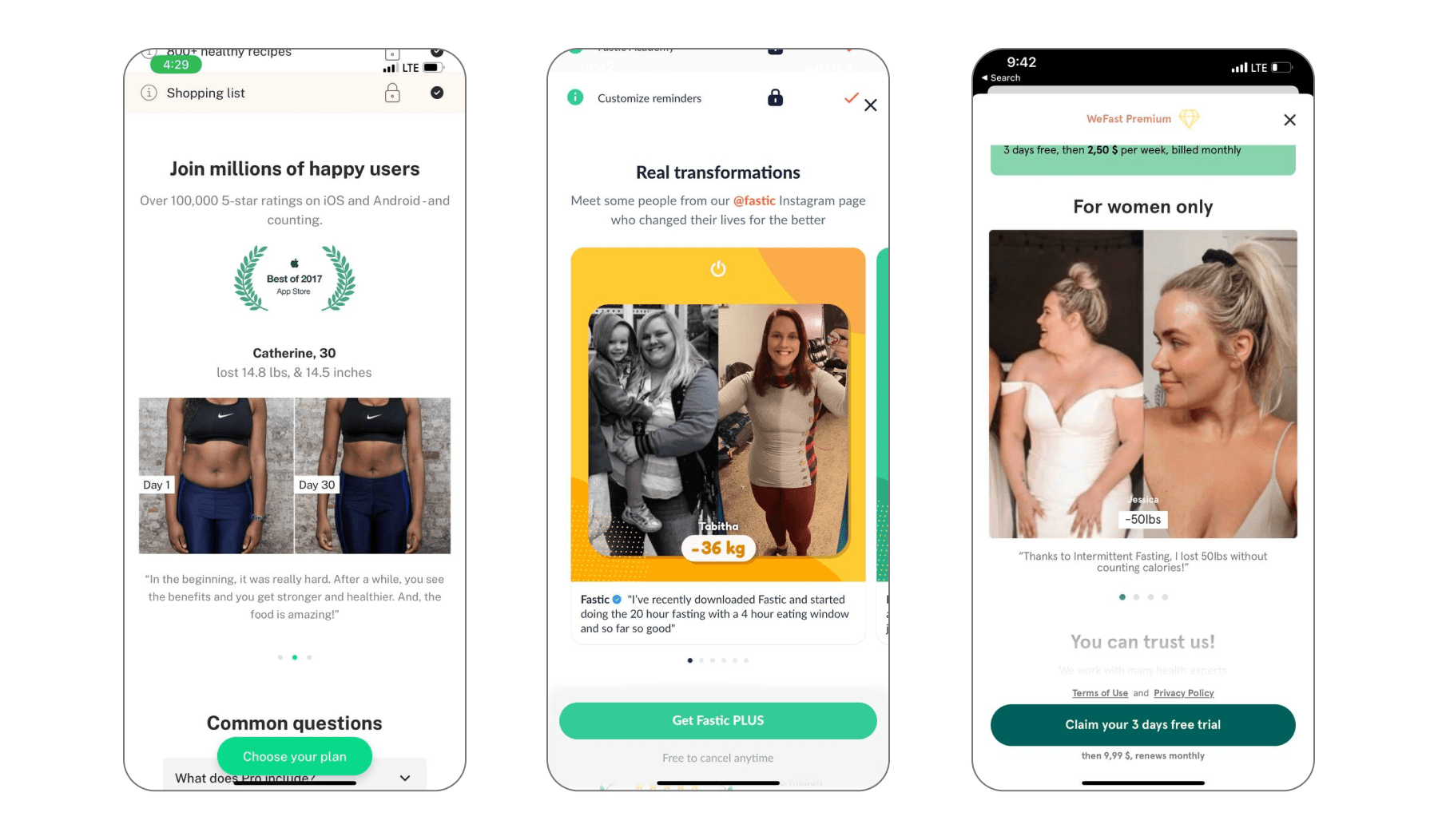
2. Lists of experts, who created the content.
This type of social proof is widely used in Mental Health, Nutrition and Fitness apps to prove that content was created by certified psychologists, nutritionists or fitness coaches.
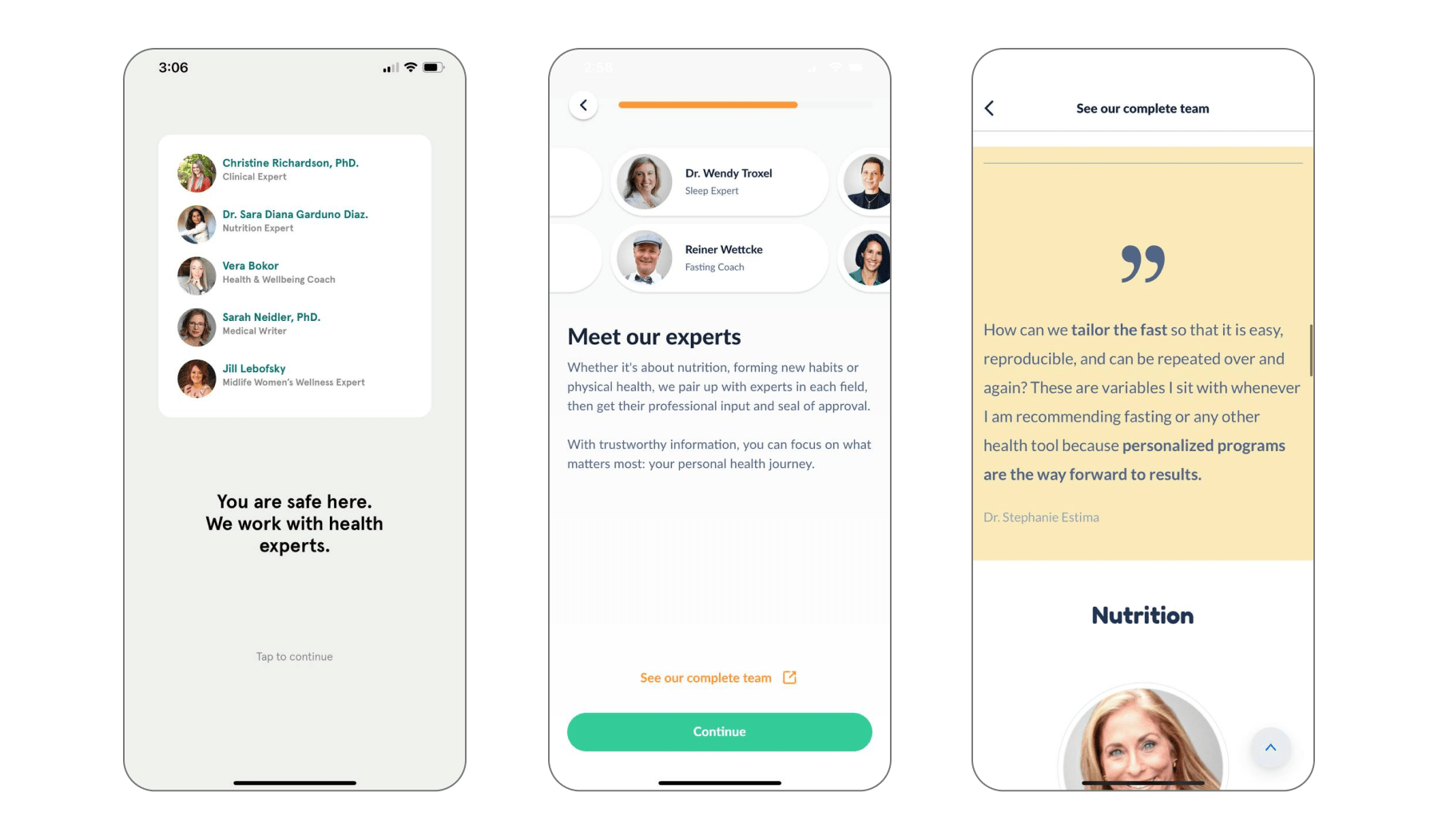
Emotions
Last but not least.
Well, do you know why people fall in love with someone? Because they like how they feel with them, they like the emotions that another person triggers. The same with apps — to make users fall in love with your app, you need to trigger right emotions.
Let’s find out what may help you with that.
1.Illustrations and animations
Illustrations and animations have been around for a long time. Big brands like Airbnb and Google incorporated illustrations into their minimalistic and functional interfaces a long time ago. The illustrations and animations definitely grab attention and are well-liked by users. But is that all? Can they be only used as the visual component? Let’s figure it out.
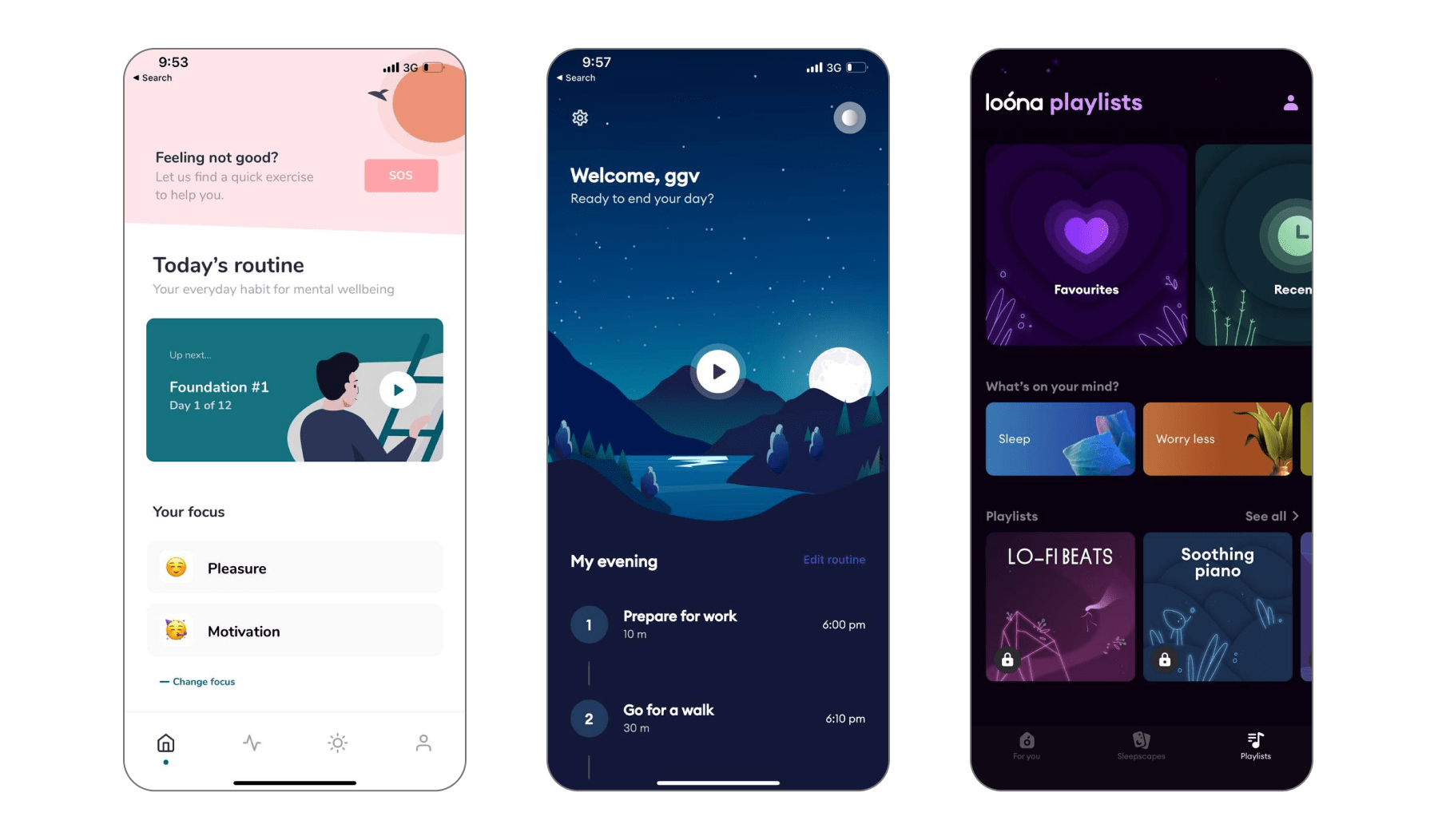
Source: Loona
Illustrations have the ability to communicate and emphasize.
Sometimes, an illustration can say much more than a human voice. They can reflect users’ emotions, express sympathy and rejoice in their success. This is why illustrations and animations are so popular among mental health apps, where empathy and support are most important.
Illustrations help convey brand values.
Illustrations help to articulate and communicate brand values on a non-verbal level to users. A brand is a personality, and nice illustrations help to reveal this personality, make it memorable and unique.
Thus, illustrations and animations help not only make the app beautiful and attractive but also do something more — tell a story and trigger emotions.
2. Invisible interaction experience
Speaking about interaction experience, I mean not only default animations that are used in every app. Everyone already knows their importance — they provide feedback, improve navigation etc. I want to dwell on small interactions and tricks which help to humanize the app. There is not much to say here — examples speak for themselves.
Haptic feedback. The Balance app uses a vibration-based relaxation experience to help you relax deeply. When you turn on meditation, the phone vibrates with the sound.
Sound design. Many apps in the H&F industry use sound to increase the sense of presence. Sound can help to create a special atmosphere in the app. Utro, an app with habits for boosting productivity, uses interesting sounds while clicking on buttons and music.
It’s considered that a more full aesthetic pleasure can be reached by influencing 3 more senses. The right combination of sound, haptic feedbacks and visual will make user experience unforgettable.
The best and most beautiful things in the world cannot be seen or even touched. They must be felt with the heart.
Well, now you know the ways to make users fall in love with your app and engage them in the long run. At Nozomi Health, we want to be a reason for the change. We are those who are passionate about making modern products that bring value. Our final product is the app that gives people hope to become healthier and happier. Pay attention to details and use small motions for emotions 🙂


